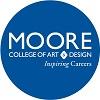Carnegie Mellon University (CMU) is home to the College of Fine Arts (CFA), which houses the School of Design. Within the school is a four-year Bachelor of Design (BDes) program. Equivalent to the BFA, the program has with three tracks: Communications (Graphic Design); Products (Industrial Design); and Environments (Physical and Digital). BDes students have the option to focus in one or all three areas or pursue a focus that combines two of the three tracks.
Other program features include access to collaborative dedicated studio spaces; the opportunity to work in multidisciplinary teams in the areas of Design for Service (Sv) and/or Design for Social Innovation (Si); participation in Confluence—a career event that attracts more than 70 major companies; and study abroad opportunities in places such as Paris, London, Korea, the Netherlands, Milan, Hong Kong, and New Zealand.
Graduates of the CMU BDes program have worked on a number of major projects including the Starbucks logo; the Pinterest interface design; typefaces for The Guardian; and the title sequence of the Spiderman movie.
The School of Design at Carnegie Mellon University has several other options for undergraduate students seeking a degree or program that combines liberal arts and design with interdisciplinary studies across pathways. The most notable option is the interdisciplinary BXA. The curriculum for this program combines components of the CMU Bachelor of Humanities and Arts (BHA), Bachelor of Science and Arts (BSA), and the Bachelor of Computer Science and Arts (BCSA).
BXA students may add a Design concentration, which consists of 98 units of required courses and 10 units of design electives. Course examples include Studio I: Form and Context; Collaborative Visualizing; Design Lab; Design Studies: Systems; and Prototyping Lab. BXA graduates go on to work in areas such as user research, strategic planning, and information systems analysis.
Another option is the Design minor. Consisting of 54 units (including 27 units of design electives), this program is open to students who would like to focus in design within another major. Course examples for the program include Design for Interactions for Products; Human Experience in Design; and Design for Interactions for Communications.
Finally, Carnegie Mellon University provides an Integrative Design, Arts, and Technology (IDeATe) program that allows students to add a concentration in an area such as Media Design, Design for Learning, Sonic Arts, Immersive Technologies in Arts and Culture, or Innovation and Entrepreneurship.
Graduate programs for designers include a one-year Master of Professional Studies (MPS) in Design, a two-year MDes in Design, and a Transition Design PhD. The CMU Design graduate programs are interdisciplinary with hands-on exposure to design, thinking, and skill processes.
Across programs, graduate students will take seminar and studio courses such as Communication Design Studio: Theory and Practice; Framing Proposals for Change; Experiential Futures; Design Writing Workshop; Studio + Lab: Designing for Interactions; Seminar: Advanced Interaction and Service Design Concepts; Design Research Methods; Seminar: Interaction and Service Design Concepts; Studio: Research Based Design for Interactions; and Transition Design.
The culminating experience for the MDes program is the thesis completed across four courses. MPS students may complete a colloquium for their culminating experience. During years two and three, PhD students will complete Research I, II, III, and IV. During the final year of the program, across two courses, PhD students will assemble a 60,000- to 80,000-word dissertation or a body of written and practical work consisting of 40,000 to 60,000 words.
Graduates of the Design programs at Carnegie Mellon University are prepared to pursue leadership roles across industries. Program alumni have been hired at major companies, firms, and organizations such as Microsoft, Google, Apple, Mayo Clinic, IDEO, Whirlpool, R/GA, the Carnegie Museums of Pittsburgh, Volkswagen/Audi, Skype, Motorola, Pinterest, Meta, and global creative agency Isobar.
Founded in 1900 by industrialist and philanthropist Andrew Carnegie, Carnegie Mellon University began as Carnegie Technical Schools. Today, the school serves more than 14,500 students from 100+ countries with access to over 200 programs across seven colleges and schools. This private, global research university also has more than a dozen degree-granting locations, along with 20+ research partnerships in Silicon Valley, Australia, Africa, and Qatar. Carnegie Mellon University is accredited by the Middle States Commission on Higher Education (MSCHE).







